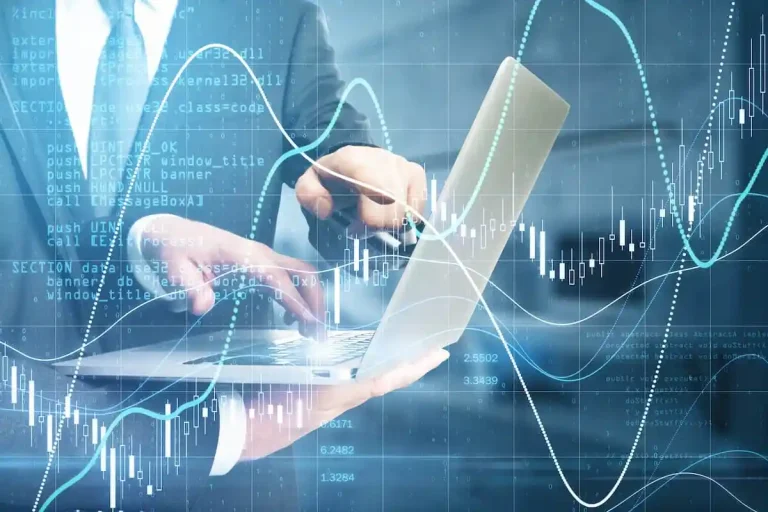Content
While working with input and output, bots perform these actions without delays due to real-time data processing of market changes. Providing such accuracy enhances the probability of making the right trades as informed by reliable data. Information analysis is transformed into patterns, helping the bots offer accurate data to traders, who, in turn, make sound decisions. Algobot’s risk management tools help you mitigate losses by automating stop-loss and take-profit orders. Algobot builds on Forex by providing this platform with better and more enhanced differentials and tools. Unlike other trading platforms, which offer generic services, Algobot provides a dynamic service that is easy to understand for https://www.xcritical.com/ every individual interested in trading.
Risks and Challenges of Automated Trading
- It’s important to research and compare the features and capabilities of different platforms before making a decision.
- You have to know past movements and tie them to current trends to make sound buying-and-selling decisions.
- While this typically requires more effort than using the platform’s wizard, it allows a much greater degree of flexibility, and the results can be more rewarding.
- These bots automate trading activities, enabling a trader to get the total value of their time and make informed decisions without necessarily spending time on a particular trade.
- Second step is to use your own trading experience to curate pre-set rules and conditions that the algorithm will employ to place trade orders on your behalf.
If a trader closes several deals negative, the chances are this trader will end up burning fast trading platform his whole deposit. Another powerful emotion is greed, which works in the opposite direction but yields pretty much the same result. This stage involves discovering trading risks and examining how and to what extent they should be allocated.

Sora is Here: OpenAI’s AI Video Generator Goes Live
The core stages of automated trading bots operation can be split into three parts — initiating indicators, distributing risk, and execution. This article aims to demystify automated trading, providing insights into its definition, functioning, benefits, risks, and popular trading strategies. It will also highlight important factors to consider when choosing an automated trading system and provide guidance on getting started with automated trading. When you’re new to automated trading, it’s best to start with a simple strategy, such as a moving average crossover or a trend-following system. Focus on understanding the mechanics of algorithm development and backtesting before diving into complex strategies. Creating and deploying an effective automated trading strategy requires a deep understanding of financial markets and programming Broker skills.
Pros of automated trading systems
Another benefit of algo trading is that a computer-managed system lets you trade multiple accounts and strategies simultaneously. Algo trading can help to reduce the incidence of mistakes made by humans when placing trades and can identify profit and loss (P&L) opportunities much faster than a human trader. It relies on expensive, complex software and takes place primarily at large investment banks, hedge funds, proprietary trading firms, and regulated cryptocurrency exchanges. To start algorithmic trading, you need to learn programming (C++, Java, and Python are commonly used), understand financial markets, and create or choose a trading strategy.
Before You Use Automated Trading Systems
Market conditions can change rapidly and dramatically, and the system might not adapt well to these changes. Because autotrading systems depend on technology, there is a chance that there will be errors or malfunctions. Trading can be disrupted and result in possible losses due to problems with servers, power outages, software faults, and internet connections.

Algobot’s tools are built to accommodate everyone from novices to experienced traders, with basic setups for new users and complex for professionals. Day trading bots buy and sell in the blink of an eye, aiming to make multiple small trades to make considerable profits in highly fluctuating ranges. These bots scan scenarios, recognise trends, and perform transactions under specified parameters. Algobot allows you to fully utilise these strategies, along with current technology, convenient instruments, and professional support.
It eliminates human intervention and can be executed automatically using computer software. However, many traders prefer to program the strategies and indicators on their own by working closely with the system programmer. While this method offers greater flexibility and can be extremely rewarding, it requires more effort from the user. Benefits – algo trading is faster and more efficient than traditional trading methods, and removes the delay and emotional biases of human decision-making. Algorithms can execute trades at precise moments based on preset conditions, reacting almost immediately to changes in market conditions. Many algo trading platforms offer pre-built trading algorithms – often called Expert Advisors on MT4 – with parameters that you can customise based on your trading strategy and risk tolerance.
As the financial markets continue to evolve, automated trading systems are likely to play an increasingly important role. By staying informed and adopting best practices, traders can leverage these systems to enhance their trading performance and achieve their financial goals. Traders might tweak their strategies too much based on historical data, making them less effective in real-time markets.
Techweez is a fast growing influential source of technology news, reviews and analysis by leading tech geeks in the industry. All these factors need to be ticked off before starting your automation journey. However, you can stay free as long as you want, still enjoying some of the functions 3Commas provides.
It’s critical to strike a balance between making tactics more effective and making sure they can still be adjusted to changing market circumstances. While some traders find it challenging to do this manually, automated software simplifies the process. Automated trading systems enable users to trade many accounts simultaneously or apply several trading models at a time. This open-source approach permits individual traders and amateur programmers to participate in what was once the domain of specialized professionals. They also host competitions where amateur programmers can propose their trading algorithms, with the most profitable applications earning commissions or recognition.
Traders sometimes incorrectly assume a trading plan should have close to 100% profitable trades or should never experience a drawdown to be a viable plan. As such, parameters can be adjusted to create a “near perfect” plan—that completely fails as soon as it is applied to a live market. Automated trading, also known as algorithmic trading or robotic trading, has revolutionized the way financial markets operate. By using advanced computer algorithms, automated trading allows traders to execute trades without human intervention, making the process faster, more efficient, and less prone to human error.
The process becomes more streamlined, systematic, and disciplined, leading to overall market improvement. It is important to note that automated trading strategies should be specific to the asset class, as different assets have different characteristics and market behavior. One of the major advantages of using auto trading is that it eliminates emotion in the trading process.
As you gain more experience and understanding of how the system works, you can gradually start using more complex strategies. They often come with high setup costs, including software purchase or subscription fees, hardware expenses, and potential ongoing costs for updates and maintenance. Furthermore, if you’re not able to develop the system yourself, you might need to hire a developer, which adds to the overall cost. Autotrading programs can be built to capitalize on developing trends, trade gaps, trade ranges, or scalp the bid/ask spread.


